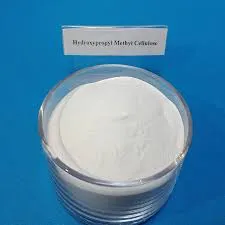
Sep . 29, 2024 09:09 Back to list
A Comprehensive Overview of HPMC Grades and Their Applications in Various Industries
Understanding HPMC Grades An Overview
Hydroxypropyl Methylcellulose (HPMC) is a versatile, non-ionic cellulose ether widely used in various industries, including pharmaceuticals, food, cosmetics, and construction. It is revered for its excellent water retention, film-forming capabilities, and adjustable viscosity, making it a crucial ingredient in numerous applications. This article will discuss the different grades of HPMC, their properties, and their applications.
What are HPMC Grades?
HPMC is available in various grades, each formulated to meet specific needs based on its chemical composition and functional properties. The primary classifications of HPMC grades are based on the degree of substitution of the hydroxyl groups in cellulose, which influences solubility, viscosity, and thermal stability. The grades are generally categorized into three major types high viscosity, medium viscosity, and low viscosity.
1. High Viscosity HPMC This grade of HPMC is characterized by its ability to produce highly viscous solutions. It often finds applications in controlled-release formulations in pharmaceuticals, where it forms gels that control the release rates of active ingredients. This property makes high viscosity HPMC a popular choice in the development of tablet coatings and suspensions.
2. Medium Viscosity HPMC Medium viscosity grades strike a balance between thickness and ease of handling. They are commonly used in various food products as thickening and stabilizing agents. Additionally, they are employed in cosmetics and personal care products, such as creams and lotions, to enhance texture and moisture retention.
3. Low Viscosity HPMC Low viscosity HPMC grades are ideal for applications requiring quick dispersion and low thickening effects. They are utilized in applications like spray-drying, where they help in improving the flow properties of powders. This grade is also suitable for applications in the construction industry, particularly in dry-mix mortar formulations, where fluidity and workability are crucial.
Properties of HPMC
The physical and chemical properties of HPMC make it an excellent choice for diverse applications. It is solubilized in cold water, forming a clear solution that can be further modified with the addition of other agents. HPMC is stable in a wide range of pH levels, making it suitable for environments where acid or alkaline conditions are present. Additionally, it exhibits low toxicity, which is important for applications in food and pharmaceuticals.
hpmc grades pdf

Applications
The applications of HPMC are broad and varied
- Pharmaceuticals In drug formulations, HPMC is widely used as a binder in tablet production, an agent for controlled release, and as a suspending agent for liquid formulations.
- Food Industry HPMC is employed as a thickener, emulsifier, and stabilizer for various food products, including sauces, dressings, and dairy items.
- Cosmetics and Personal Care It acts as a thickening agent in lotions, creams, and gels, enhancing product texture and skin-feel.
- Construction Used in mortar, tile adhesives, and other construction materials, HPMC improves workability and adhesion properties.
Conclusion
In summary, HPMC is an essential component across different industries, with its various grades offering specific functionalities tailored to meet diverse requirements. Understanding the differences among HPMC grades can help manufacturers and formulators select the ideal product suited for their applications, ultimately leading to enhanced product performance and consumer satisfaction. Whether in pharmaceuticals, food, cosmetics, or construction, HPMC continues to play a pivotal role in innovation and quality enhancement.
-
Versatile Hpmc Uses in Different Industries
NewsJun.19,2025
-
Redispersible Powder's Role in Enhancing Durability of Construction Products
NewsJun.19,2025
-
Hydroxyethyl Cellulose Applications Driving Green Industrial Processes
NewsJun.19,2025
-
Exploring Different Redispersible Polymer Powder
NewsJun.19,2025
-
Choosing the Right Mortar Bonding Agent
NewsJun.19,2025
-
Applications and Significance of China Hpmc in Modern Industries
NewsJun.19,2025







